Do-it-yourself wall decoration with decorative panels
The market of modern finishing materials is constantly replenished with new technologically advanced solutions. Products appear that are easy to assemble and undemanding to care for, but at the same time have an excellent appearance, are durable and resistant to mechanical stress. This type of finish includes decorative wall panels, which can be made from many different materials, have an impressive selection of shapes, colors and textures that imitate both natural and artificial surfaces. In the article, we will consider the types of decorative panels and how to install them with your own hands.
Decorative wall panels are a fairly reliable and durable finishing material. This is a versatile cladding for residential and public spaces, decorated in all kinds of design styles - classicism, modern, baroque, rococo and many others. They transform the surface to create an original pattern or relief. Perhaps, today it is one of the most popular types of finishes.
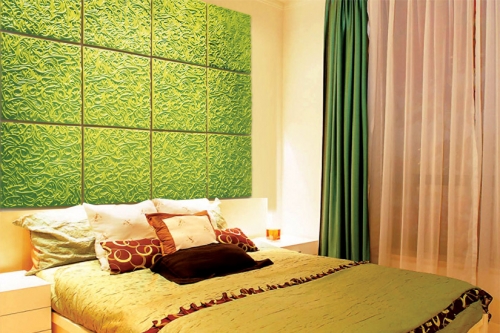
Types of decorative panels
Wall decorative panels are made of various materials, and each type has differences not only in appearance, but also in its characteristics.
Modern technologies make it possible to produce them from the following materials:
- natural wood - solid wood or glued wood;
- chipboard;
- fibreboard of different density (fiberboard, MDF, HDF);
- gypsum vinyl;
- polyvinyl chloride;
- polystyrene;
- aluminum;
- Cork;
- acrylic glass;
- textile;
- leather.
Natural wood panels
- Wooden panels are made from many types of wood. The most popular are: ash, cherry, spruce, beech, oak, maple, pine, alder and cedar. Wood is an environmentally friendly material ideal for wall cladding in living areas such as a living room, bedroom or study.
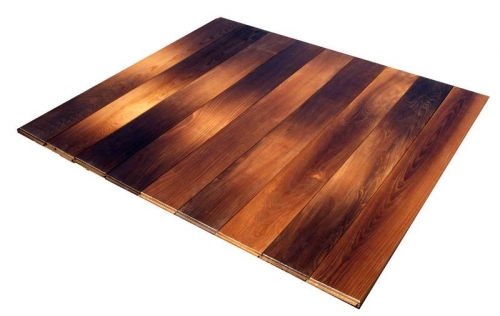
Advice: if you need to decorate the walls in the bathroom or kitchen, that is, in those rooms where there is high humidity, then you should purchase panels coated with a special moisture-resistant impregnation, varnish or wax. In this case, it is worth paying attention to the presence of impregnation of the lock connection and ends, since otherwise these places will begin to exfoliate and the panels will lose their decorative appearance.
- The main advantage of solid wood decorative panels is their aesthetics, environmental friendliness, sound and heat insulation. Most often they are used in the interior, decorated in a classic style, since wood is considered a noble material that gives the room respectability, comfort and coziness. In addition, such panels, if necessary, are easy to repair, which means that the term of their use is practically unlimited. The damaged surface can be sanded and polished, and then painted and varnished again. Repainting of products or their tinting is also allowed.
- Solid wood decorative panels have a high cost, therefore, glued wood products or the so-called frame panels are more popular among buyers.
- This option assumes the presence of three layers: the top, as a rule, is made of valuable wood, and the frame layers can be made of conifers - spruce or pine.
- The layers are bonded under pressure at a high temperature, while the fibers of each of them are located parallel to the previous one. This design helps to avoid deformation during operation. Finished decorative panels are coated with acrylic varnish, or treated with a wax composition.
- Another option for wooden models is the coating of inexpensive wood with veneer. Such panels outwardly do not differ from natural wood products, but have a significantly reduced cost.
Wall decoration with decorative wood panels photo
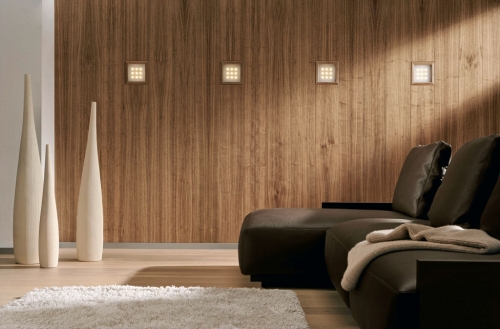

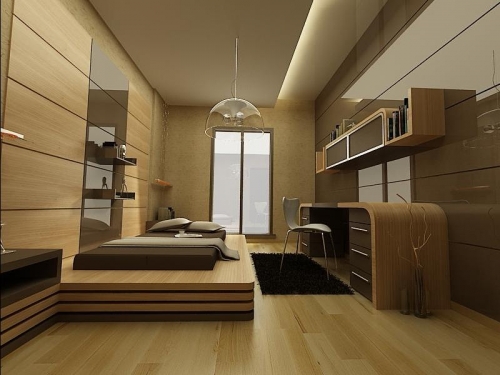
Recycled wood panels
Chipboard
- This is a material from wood shavings or sawdust obtained by the method of hot pressing, resin is used as a binder. Decorative panels based on chipboard are not as reliable as their natural wood counterparts, but are considered an excellent material for wall decoration in dry and warm rooms.
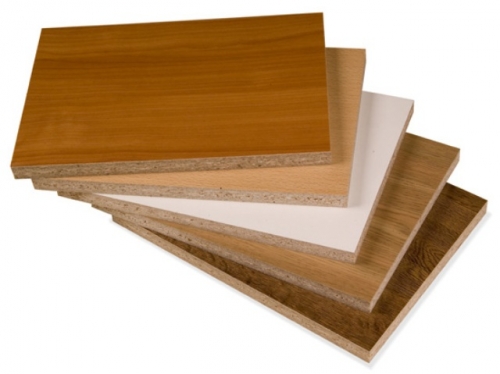
- This cladding should not be used in the bathroom, kitchen or balcony walls. Under the influence of moisture and with a sharp change in temperature, they can begin to collapse, exfoliate, or crumble.
- Decorative panels based on fibreboard less susceptible to moisture, since in their production wood fibers are used, which, under the influence of pressure and high temperature, are soldered into a single material. The result is lightweight yet dense panels that can be laminated with resin-impregnated paper or foil, or veneered. They can be used in kitchens and corridors, as they are fairly easy to clean, but direct contact with water is best avoided.
- This is a type of fiberboard with an average density. For manufacturing, the method of dry pressing under pressure and at elevated temperatures is used. Fine-grained wood chips are used as raw materials, and urea resins are used as a binder.
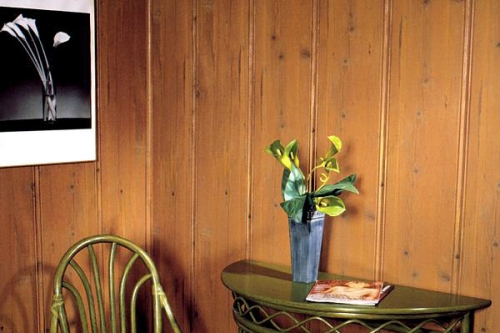
- They can serve as wall decoration in any room. They are reliably protected from moisture, and have sound-absorbing properties and form a heat-insulating layer, which is why they are widely used for finishing balconies and loggias.
- MDF panels are considered a strong and reliable material that can withstand heavy loads, and therefore it is allowed to mount all kinds of furniture on them. In addition, modern technologies make it possible to produce fire-resistant decorative MDF panels covered with veneer, laminated or laminated with paper-vinyl, decorative paper or foil.
- It is a high density fiberboard. In terms of their main characteristics, panels made of this material differ little from MDF panels. Most often they are made in a perforated version. Several types of finishes are available: single-sided lamination, double-sided lamination, double-sided veneer and double-sided foil finishing, there is also an option without additional finishing.
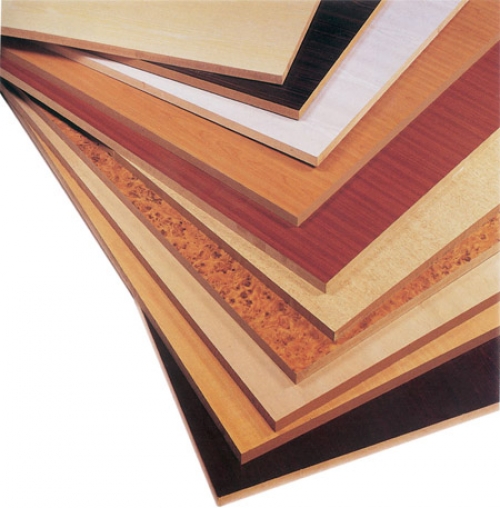
- The perforation shape can be very diverse: triangles, squares, stars, circles, labyrinths, etc., and among the coloring popular options are: maple, walnut, mahogany, beech, wenge and cherry.
- HDF-based material is used for finishing dry rooms, it has increased strength, can withstand heavy loads, but the price for this type of product is set quite high.
- All decorative panels based on wood-board materials are produced using modern technologies, using high-quality ingredients, which means that the quality of finished products remains at a guaranteed high level.
- Wall panels based on recycled wood have all kinds of patterns and designs, they can imitate masonry or brickwork, the surface of wood and other natural materials, as well as artificial materials.
- They are mounted both on the crate and on the flat surface of the walls. Moisture-resistant materials require installation directly on the wall or solid crate using adhesives, since when using sharp staples or construction nails, the surface is damaged and moisture can penetrate into the panels, which means that the heterogeneous structure will begin to collapse.
Plastic decorative panels
Polyvinyl chloride
- Plastic decorative panels are made on the basis of polyvinyl chloride and are in the greatest demand among buyers. PVC panels have many advantages - they are long service life, increased moisture resistance, hygiene, easy maintenance and much more. Such characteristics make them indispensable in those rooms where there is high humidity or high traffic, for example, a bath, a kitchen, a corridor or a hall, as well as any public places - offices, banks, cafes, etc.
- You can find decorative PVC panels with good resistance to temperature changes, they can easily withstand 40-degree frosts and temperatures up to 115 ° C, that is, they can be used for finishing external walls or as interior decoration for baths and saunas. Most of the PVC panels are still intended for interior decoration of heated rooms.

- Manufacturers offer products with a smooth and embossed surface, and a pattern or pattern can be applied to the front side that imitates various materials (wood, leather, masonry, and so on). For reliable protection, the top layer is covered with a glossy or matte varnish, its main feature is that it is antistatic, which means it does not attract dust particles.
- Installation of such panels is extremely simple, since they are equipped with a locking system, in addition, it is easy to give the material the required dimensions by cutting the sheets to the required size using an ordinary construction knife.
Gypsum vinyl
- Decorative panels made of gypsum vinyl are used for interior wall decoration, as well as for internal partitions. For their production, drywall is used, on which a layer of vinyl coating is applied, which is why they are not afraid of moisture, resistant to mechanical stress and can be washed with any detergent.
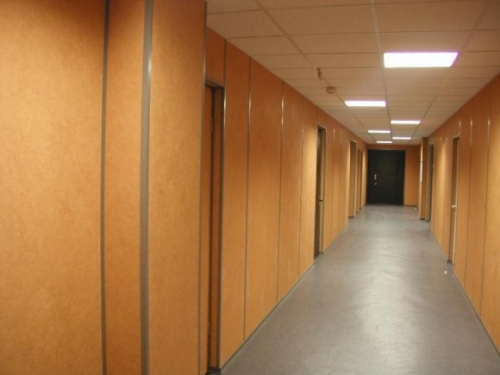
- Installation of gypsum vinyl panels is carried out on an aluminum frame using connecting profiles, which also have a decorative function. In addition, the panels can be removed and even re-positioned if required.
Polystyrene
- Another type of plastic panels are decorative polystyrene panels. , on which a layer of protective film is applied. They have different thicknesses, the surface can be smooth or embossed, mirror-like and have many colors.
- Installation is carried out on a crate or on a flat surface (if the panels are made on a self-adhesive basis). In addition, due to the special manufacturing technology and flexibility, polystyrene panels can be faced with structures of any configuration, for example, columns or fireplaces.
Expanded polystyrene
- Decorative panels are also produced from expanded polystyrene with a rigid base. Fiberglass is used as a reinforced layer. They have an increased degree of hydro, noise and heat insulation. This is a fairly moisture resistant material that is suitable for wall cladding in rooms with high humidity - bathrooms and shower cabins, interior decoration of swimming pools, baths and saunas, terraces, cladding of loggias and balconies.
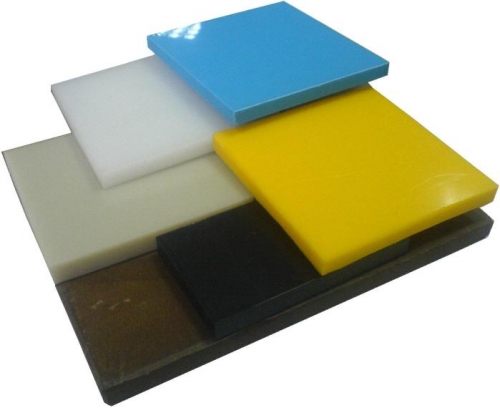
- All types of plastic panels are installed on the lathing, or glued directly to the wall using acrylic or silicone glue. The panels are easily cut in any direction, and are interconnected by a tongue-groove or groove-groove locking system. In the first case, they are tightly connected to each other, forming an almost single surface with a uniform pattern. The second method of joining assumes the presence of additional jointing, which may differ in color from the colors of the panels, such inserts may have a relief or be smooth with a mirror texture.
- For the price, plastic panels are the most profitable finishing material in comparison with other types of decorative panels, and in their characteristics it is not inferior to any of them, since it is a moisture resistant, chemically harmless material that is not afraid of temperature changes and does not undergo deformation.
- The disadvantages include only the fact that plastic has low resistance to stress, that is, it is undesirable to hang heavy objects on it. In all other respects, it is an ideal material for decorating any room.
- In addition, the surface of plastic panels can be painted in many colors and have different textures. For example, simulate the surface of stone, brick, wood, leather and other materials. It is very easy to care for such panels, it is enough to periodically wipe them with a damp cloth or wash them with warm water with the addition of any detergent that does not contain solid particles.
Wall panels in fabric and leather
- A special type of wall panels for wall decoration include panels made of fabric and leather. They can have various shapes, textures, and degrees of softness. They can be used to decorate all the walls in the room, or use them as a bright accent. Photo printing with any image can be applied to the surface of fabric or leather.
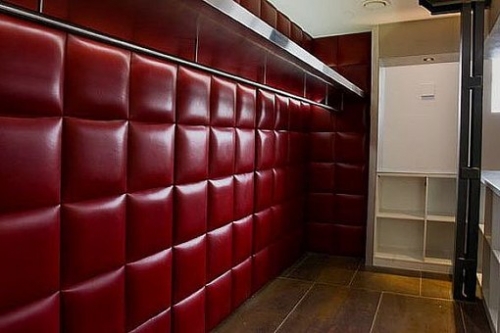
- Textile panels have varying degrees of softness, which is achieved due to the backing, but they are also produced with a relief surface, which is formed by stretching the fabric onto a hard material with the required relief.
- The advantages of such products include the presence of high aesthetic qualities, a variety of assortments, individual style, provision of heat and sound insulation, environmental friendliness and ease of care. The material can be suede, natural and artificial leather, various fabrics and felt.
Cork decorative panels
- Decorative cork is a unique natural material with a long service life and low maintenance requirements. Cork panels do not deform, do not absorb odors and moisture, do not attract dust and do not burn, and any dirt can be easily washed off.
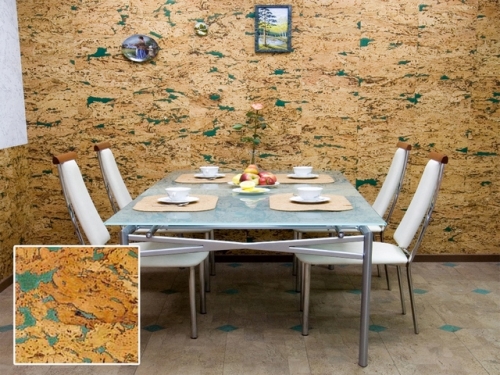
- The main advantage of this material is its environmental friendliness. This decorative finish will give any room an exclusive and elegant appearance, as well as protect against noise and cold.
- Cork panels can be made from both cork bark and cork chips; in the second case, the price of the product will be slightly lower, but all the advantages of the material will remain. Combined two-layer panels are also produced, where the bottom layer is pressed chips, and the front side is a monolithic bark.
Aluminum decorative panels
- Aluminum composite decorative panels have a unique holographic appearance due to a special processing technology. They are manufactured in the form of a structure consisting of two layers of aluminum cladding and a sheet of monolithic polyethylene between them.
![]()
- Aluminum decorative panels have longitudinal and chaotic types of patterns and several basic types, which, as a rule, are hand-made by artists. Caring for the panels is quite simple, you should wipe them as they become dirty with a cloth soaked in warm soapy water or using any window cleaner. It is better to refrain from detergents containing alcohol, acetone or abrasive particles.
Acrylic glass decorative panels
- Decoracryl wall panels are a unique material based on acrylic glass made from synthetic resins. They can be decorated in all sorts of ways. Various elements are fused into the surface, for example, shells, jewelry, semi-precious stones, etc.
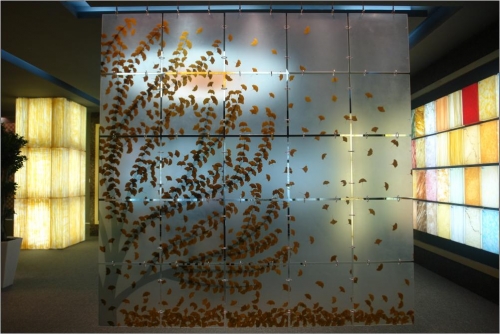
- Such products are flexible and lightweight, while remaining strong enough. Acrylic glass has good moisture resistance, mechanical strength, resistance to temperature changes and low specific gravity. In appearance, such panels are similar to tiles, so they are often used when decorating bathrooms and kitchens.
Sizes of decorative panels
All decorative panels for walls are usually divided into three types, depending on the size of one slab.
- Tiled decorative panels- are made in the form of square tiles, two sizes are considered standard: 30x30 cm and 90x90 cm. They are easy to lay out panels or mosaics on the wall using tiles with different patterns and colors. Each square has grooves on all sides, in order to fix the finish on the surface, it is necessary to use fasteners and special jointing.
- Stacked or slatted decorative panels- are made in the form of separate planks (slats), the length of which varies from 0.9 to 3.7 m, the width can be up to 30 cm, and the thickness is not more than 12 mm. Installation of this type of decorative panels presupposes the presence of a crate, and the fastening must be done using metal brackets (clamps). They do not have a lock connection, therefore, when installing them, the method of connection using a layout, internal or external, is used. Panels are placed close to each other and fixed with a plug-in layout, which can be hidden behind the panels or visible, applied over the slats. The visually finished finish is similar to a clapboard surface.
- Sheet decorative panels- are made in the form of sheets having a height of 244 cm and a width of 122 cm, the thickness does not exceed 6 mm. A very convenient option in cases where it is necessary to avoid a large number of joints, in addition, the panels are installed as soon as possible. Panels can be made from recycled wood (fiberboard, MDF), drywall, aluminum, PVC or polystyrene. The front side, as a rule, is decorated with a pattern or pattern and covered with a protective varnish layer, and a water-repellent compound is applied to the back side. Products can be perforated or solid. Installation is carried out on a previously prepared crate, or directly on the wall, if its surface is perfectly flat and even.
Do-it-yourself wall decoration with decorative panels
Decorative wall panels of any kind are easy enough to install, even without special training and without professional equipment. However, there are a few simple rules to follow to ensure a good installation.
There are two main ways of wall cladding using decorative panels:
- Kleeva.
- Wireframe.
The glue method assumes the presence of a flat surface, cleaned of other finishing materials. Such a finish requires a lot of strength and experience. You can glue the panels either on a special glue - acrylic or silicone, or by purchasing products with a self-adhesive surface.
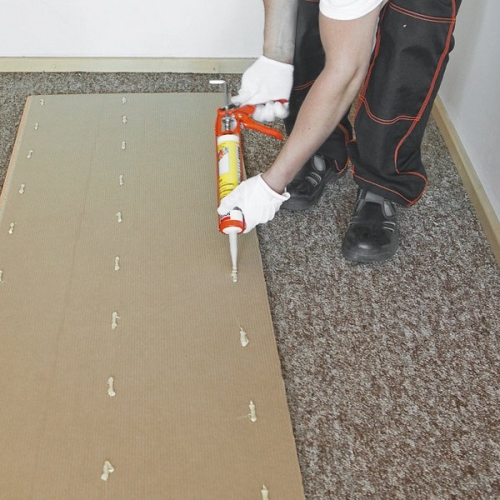
The frame method involves the construction of a lathing from a metal profile or wooden battens. The aluminum profile does not require additional processing, while the wooden material must be impregnated with antiseptics and moisture resistant agents. That is why the device of the metal frame is a priority.
Installation of panels on a frame or lathing involves several main stages.
Installing the frame
- Initially, an upper ceiling rail is installed, which is leveled using a laser level or a building level. You can fix the profile with self-tapping screws or dowels. The lower guide is installed in the same plane. The direction of the planks should be perpendicular to the panels to be installed.

- After fixing the upper and lower guides, vertical intermediate profiles are attached, so that the distance between them is 40-50 cm. This is necessary so that in the future it will be possible to mount the panels without any problems. For strength, the frame can be reinforced with several vertical intermediate profiles.
Installation of decorative panels
- To begin with, a starting profile is fixed from the corner of the wall, into which the first panel will be attached in the future. The fastening of decorative panels is carried out using self-tapping screws, but if the frame is made in the form of a wooden crate, then it is best to fasten it with a construction stapler. There are also several types of panels, which are fastened only to special brackets.

- The panels can be fixed with a tongue-groove lock, or with a special jointing. Each element to be mounted is checked in level so that the resulting wall is aligned in one plane. Before installing the last panel, the finishing molding should be fastened, then the panel is inserted into it without additional fastening.
- Having finished finishing with panels, you can complete the structure with special strips - this will give the decorative surface a finished look. If necessary, a heat-insulating or sound-absorbing layer is laid between the wall and the panels.
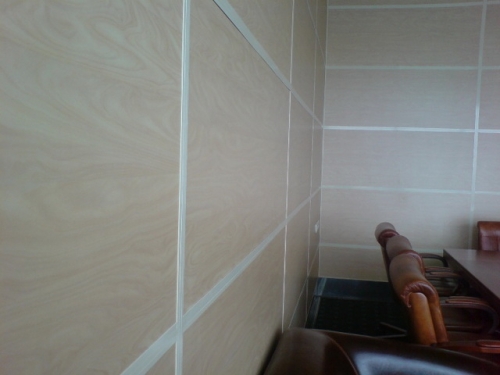
Wall decoration with decorative panels video
Advantages of decorative panels
- Easy and quick installation- since the fastening of the panels does not provide for cleaning the walls to the base, then all work can be carried out in record time. In addition, when fastening, there is no need to use special tools or equipment, as well as to involve expensive professionals. All work is easy to do on your own, you only need materials for the lathing, a construction stapler and staples, as well as the panels themselves and accessories for them. Thanks to the tongue-and-groove system, installation is quick and accurate, with virtually no waste or debris.
- Universal application - decorative panels are successfully used in premises, for any purpose (public or residential). They have a high level of noise absorption and thermal insulation, reinforced by a layer of insulation between the panels and the wall. Installation can be carried out in any direction (horizontally, vertically, diagonally), there are many colors and textures, due to which complex and bold design solutions can be realized. Thanks to a special production technology, they can imitate almost any surface and texture. Different textures are easy to combine and select in such a way as to create an atmosphere of warmth, comfort and coziness in the house.

- Notdifficult care- decorative panels are made of materials that can easily withstand wet cleaning, therefore, care for the decorative surface does not require large costs, it is enough to wipe the lined walls with a damp cloth once a month. The advantage of the panels is that they do not collect dust. Of course, when choosing embossed models, small details can be clogged with dirt particles, so it is better not to use them in the bathroom, in the kitchen and in the corridor. The panels can be washed with any detergent that does not contain chemicals and particulate matter.
- Economical material- in comparison with other high-quality facing materials, decorative panels for walls will cost an order of magnitude cheaper.
- Reliable, durable and aesthetically pleasing material- they are made of various materials, but any of them are distinguished by safety, hygiene, and also resistance to mechanical damage. Decorating the walls with decorative panels avoids the need for repairs for a long time.
Wall decoration with decorative panels price
- Today, plastic panels differ in variety both in color, shape, and in the material from which they are made, which is why the prices of one type of decorative panels can differ significantly from another.
- For example, decorative panels made of solid wood will cost at least 10 thousand rubles. per m2, and plastic will cost about 3-4 thousand rubles. per m2.
Everyone decides for himself what materials should be used to decorate the walls in the room, based on their budget and preferences. In any case, decorative plastic panels are always a reliable, strong and durable coating with high aesthetic qualities.









